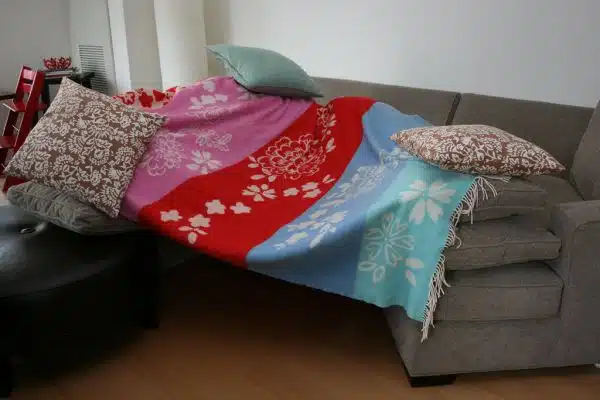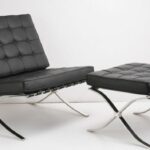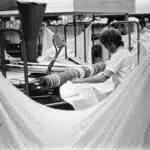As an upholstery expert, one of the most common issues that clients ask me about is how to restuff couch cushions. Over time, cushions can lose their shape and firmness, resulting in uncomfortable seating and an unsightly appearance. Restuffing your couch cushions is a cost-effective solution that not only improves the comfort of your furniture but also prolongs its lifespan.
Restuffing sofa cushions is a fairly simple process that requires minimal tools and materials. Understanding the proper steps to take ensures that your couch will look and feel like new again. In this article, we will discuss the materials needed for restuffing, as well as provide step-by-step instructions on how to restuff couch cushions effectively. With our guidance, you will be able to revamp your furniture in no time and enjoy comfortable seating once again.
Assessing Your Cushions’ Condition
Before you restuff your couch cushions, it’s important to assess their current condition. One key factor to consider is the cushion density. This refers to the amount of foam inside the cushion and is usually measured in pounds per cubic foot. A good quality foam will typically have a density of 1.8-2.5 pounds per cubic foot, while lower quality foams may have a density as low as 0.9 pounds per cubic foot.
Another important aspect to consider is the wear on the cushions. Over time, cushions can become flattened or misshapen due to frequent use, resulting in discomfort and poor support for those sitting on the couch. You should examine each cushion individually and look for signs of wear such as sagging or lumps in the foam.
It’s essential that you accurately assess these factors before proceeding with restuffing your couch cushions. Choosing the wrong type of foam or failing to address any underlying issues could result in an uncomfortable seating experience even after restuffing. In order to achieve optimal results, it’s crucial that you take careful note of both the density and wear of each cushion and make informed decisions about how best to proceed with restuffing based on this information alone. In order to do so successfully, you must first choose the right type of foam for your needs – we’ll explore this topic further in the next section.
Choosing The Right Type Of Foam
When it comes to restuffing your couch cushions, choosing the right type of foam is crucial. Foam density and firmness are two important factors that you need to consider before making your purchase. The wrong choice can result in an uncomfortable seating experience or cushions that quickly lose their shape.
Foam density refers to the weight of the foam per cubic foot. A higher density foam is more durable and will last longer than a lower density foam. However, it may also be more expensive. Foam firmness, on the other hand, refers to how soft or firm the foam is. It’s important to choose a firmness level that suits your needs and preferences.
Here are some tips for choosing the right type of foam for your couch cushions:
- Consider the usage: If your couch sees heavy daily use, opt for a higher density foam for durability.
- Determine the desired comfort level: If you prefer a firmer seat, choose a higher firmness level. If you want a softer feel, go for a lower firmness level.
- Check out reviews: Look for feedback from others who have purchased the same type of foam to get an idea of its quality and durability.
- Consult with an expert: An upholstery professional can help guide you towards the right type of foam based on your specific needs.
With these factors in mind, take some time to research and choose the best type of foam for your couch cushions. In order to ensure accurate measurements for purchasing your new foam inserts, follow our next section on measuring your cushions.
Measuring Your Cushions
To restuff your couch cushions, it is important to first measure them accurately. This will ensure that you purchase the correct amount of foam and fabric for the job. Measuring accuracy is crucial because if the measurements are off, the cushions may not fit properly and could lead to discomfort.
One common mistake when measuring cushions is not taking into account the depth of the foam, which can be anywhere from 2 to 8 inches. It is important to measure both the length and width of each cushion, as well as its depth. Another mistake is assuming that all cushions are created equal. Even if your couch came with identical-looking cushions, they may differ in size due to wear and tear or manufacturing variations.
Measuring your cushions may seem like a simple task, but it requires attention to detail to avoid costly errors. Take your time and double-check your measurements before making any purchases. With accurate measurements in hand, you can move on to removing the old foam and preparing for the restuffing process.
Removing The Old Foam
To begin the process of restuffing couch cushions, it is essential to remove the old foam first. This step is crucial in ensuring that the new foam fits perfectly into the cushion cover without any bulging or sagging issues. Removing the old foam can be a relatively simple process if done correctly.
Firstly, start by flipping over the cushion cover and unzipping it. Once you have access to the interior, carefully remove the old foam from inside. Be careful when pulling out the foam so that you don’t damage the cushion cover.
Secondly, disposing of old foam can be an issue since most types of foams are not biodegradable. However, recycling foam is an environmentally friendly option that ensures that your waste doesn’t end up in landfills. To recycle your old cushions, you can contact local recycling centers or reach out to a furniture donation organization.
Lastly, once you’ve removed and disposed of your old foam, it’s time to prepare for installing new ones. This stage requires accurate measurements and cutting tools for precision. With new high-density foams in hand and appropriate tools at your disposal, you can move forward with confidence knowing that your new cushions will provide maximum comfort and support for years to come.
Transitioning into preparing the new foam requires a thorough understanding of how to measure and cut precisely while avoiding wastage of materials or damaging them in any way during installation.
Preparing The New Foam
After removing the old foam from the couch cushions, it’s time to prepare the new foam. One of the most important considerations when choosing new foam is density. Foam density refers to how much a cubic foot of foam weighs. The higher the density, the more support and durability it will provide. For couch cushions, a medium or high-density foam is recommended.
Another factor to consider when selecting new foam is thickness. The thickness of the foam will depend on how much cushioning you want for your couch cushions. A typical sofa cushion should be around four inches thick, but this can vary depending on personal preference and usage. If you plan on using your couch frequently for lounging or napping, thicker cushions may be more comfortable.
Once you have chosen your foam density and thickness, it’s time to cut the foam to size. To do this, measure your cushion covers and mark out your measurements on the foam using a marker pen or tailor’s chalk. Use an electric carving knife or serrated bread knife to cut along your markings in straight lines. Be sure to keep the blade as straight as possible while cutting so that you get even pieces of foam.
Transition: Now that we’ve covered how to choose the right type of foam for your couch cushions and how to measure and cut it down to size, let’s move onto how to properly insert it into your cushion covers without any lumps or bumps.
Cutting The Foam To Size
When it comes to restuffing couch cushions, cutting the foam to size is a critical step. The first thing to consider is the foam density. This factor will determine how much support and comfort your cushions will provide. Generally speaking, higher density foams are more durable and provide better support, while lower density foams are softer and more comfortable.
In terms of cutting tools, you have a few options. A serrated knife or electric carving knife can work well for basic cuts, but for more intricate shapes or angles, a band saw or jigsaw may be necessary. Before cutting the foam, it’s important to measure the cushion cover accurately and mark where cuts need to be made. Be sure to use a straight edge for clean cuts and take your time to avoid mistakes.
Once you’ve cut the foam to size, it’s time to move on to inserting the new foam into the cushion cover. This step requires careful attention as well, as you want to ensure that the foam is evenly distributed throughout the cover for optimal comfort and support.
Inserting The New Foam
After cutting the foam to size, the next step in restuffing your couch cushions is inserting the new foam. When choosing foam for your cushions, it’s essential to consider both the density and thickness of the foam. Foam density refers to how much weight can be placed on the foam before it begins to deform or lose its shape. Meanwhile, foam thickness determines how soft or firm the cushion will feel.
To insert your new foam into the cushion cover, follow these steps:
- Fold your new foam in half and insert it into one end of the cushion cover.
- Work slowly and carefully to ensure that you don’t tear the fabric.
- Once you’ve inserted one end of the foam, use your hands to work it towards the other end of the cover.
- Smooth out any wrinkles or bumps as you go.
- Once you’ve worked all of the new foam into the cushion cover, close up any zippers or snaps and give your cushion a good shake to help distribute the filling evenly.
By paying attention to both density and thickness when selecting your new foam, you can achieve a comfortable and supportive cushion that will last for years to come. After inserting your new foam, take some time to fluff up your cushions by punching them gently on all sides. This will help restore their original shape and make them look like new again.
Refluffing Your Cushions
Fluffing techniques are an essential aspect of maintaining the cushions on your couch. Over time, even the most high-quality cushions will lose their shape and become flat. Fortunately, there are several fluffing techniques that can help restore the life to your couch cushions.
One effective technique is to simply punch and squeeze your cushions. This method involves removing the cushion from its cover and hitting it with a closed fist while squeezing it at the same time. By doing this, you can redistribute the filling inside the cushion, helping it regain its natural shape.
Another technique involves using a vacuum cleaner to suction out any dust or debris that has accumulated inside your cushion. Simply remove the cover from your cushion and use a vacuum attachment to clean out any dirt or debris that may be causing your cushion to flatten.
Maintenance tips are also crucial for ensuring that your couch cushions remain fluffy over time. One important tip is to regularly rotate your cushions so that they wear evenly. You should also avoid placing heavy objects on top of them, as this can cause them to lose their shape more quickly.
Incorporating batting for extra fluff is another effective way to keep your couch cushions looking their best. Adding batting between the foam insert and cover can provide additional support and increase comfort levels, making it an excellent option for those who want an extra layer of plushness in their seating area.
Using Batting For Extra Fluff
Accurately measuring the couch cushion is a crucial component of restuffing with batting. It is important to take into account both the length and width of the cushion to ensure that the batting is cut to the appropriate size. Once the batting has been cut to size, it is necessary to insert it into the cushion and make sure it is evenly distributed. To do this, it is advisable to use a soft brush or a vacuum cleaner to ensure the batting is evenly distributed throughout the cushion.
Measure Batting
When it comes to restuffing your couch cushions, using batting is an excellent way to add extra fluff and comfort. However, before you start stuffing, it’s important to measure the amount of batting you’ll need for each cushion. This will ensure that you have enough material to achieve the desired level of fluffiness.
To measure the batting, start by laying out each cushion on a flat surface. Use a measuring tape to determine the length and width of each cushion. Once you have these measurements, add an additional inch to both dimensions to account for any cutting or fluffing techniques you may use later on.
Next, cut your batting according to your measurements. You can use scissors or a rotary cutter for this step. Be sure to cut the batting slightly larger than your cushion dimensions so that there is enough material to wrap around the sides of the cushion.
Finally, use various fluffing methods such as pulling and stretching the batting to make it more pliable and easier to work with. This will also help create a more even distribution of fluffiness throughout the cushion. With these cutting techniques and fluffing methods in mind, you can confidently restuff your couch cushions using batting for extra comfort and support!
Insert Batting
When it comes to adding extra fluff and comfort to your couch cushions, using batting is a popular choice. However, there are other batting alternatives available that you can explore. For instance, foam or down feathers are also great options that can provide additional cushioning and support.
If you decide to use batting for your cushions, inserting the material correctly is crucial in achieving the desired level of fluffiness. To do this, first lay out your cushion cover on a flat surface and place your cut batting inside it. Make sure to wrap the batting around the sides of the cushion cover as evenly as possible to avoid lumps or sagging.
Once you have inserted the batting into the cushion cover, zip up or sew any openings shut. If you’re feeling adventurous, consider making DIY cushion covers to personalize your home decor even further. With these tips in mind, you can confidently add extra comfort and support to your couch cushions with batting or other alternatives!
Replacing Cushion Covers
The next step in restuffing couch cushions is to replace the cushion covers. This is necessary if the old covers have become worn or damaged, or if you want to update the look of your furniture. The first step in replacing cushion covers is selecting the right fabric.
When choosing a new fabric for your cushion covers, it’s important to consider both style and functionality. You’ll want to choose a durable fabric that can stand up to daily wear and tear, as well as spills and stains. Look for fabrics that are easy to clean and maintain, such as cotton or polyester blends. You may also want to choose a color or pattern that complements your existing decor.
If you’re feeling crafty, you can even make your own DIY cushion covers. This is a great way to customize your furniture and save money at the same time. There are many tutorials available online that will walk you through the process step-by-step. Just be sure to choose a fabric that’s appropriate for upholstery use and follow proper sewing techniques for best results.
Sewing Tips For Cushion Covers
When it comes to restuffing couch cushions, it’s essential to ensure that the cushion covers are in good condition. In some cases, you may need to replace the covers altogether. If you’re going to sew new covers, there are a few sewing techniques you should keep in mind. First, make sure to measure your cushions accurately. You’ll want to take into account both the length and width of your cushions, as well as their thickness.
Once you’ve measured your cushions, it’s time to choose the right fabric for your cushion covers. When selecting fabric for upholstery projects like cushion covers, durability is key. Consider using a heavyweight fabric such as canvas or denim. These fabrics are sturdy enough to withstand daily wear and tear and will help prolong the life of your cushion covers.
When sewing your cushion covers, be sure to use a strong thread that matches the color of your fabric. This will help ensure that your stitches blend seamlessly with the rest of your project. Additionally, consider reinforcing stress points on your cushion cover (such as corners or seams) by backstitching or adding extra layers of fabric.
- Take breaks when sewing to avoid eye strain and fatigue.
- Use pins or clips instead of relying solely on measurements.
- Experiment with different stitch lengths and tensions until you find what works best for you.
- Don’t be afraid to ask for help if you get stuck.
- Always double-check your measurements before cutting any fabric.
In summary, when sewing cushion covers for restuffed couch cushions, taking accurate measurements and choosing durable fabrics is crucial. Utilizing proper sewing techniques such as reinforcing stress points and using a strong thread will also ensure that your cushion covers last longer. Remember these tips along with taking breaks while sewing and experimenting with different stitch lengths can all contribute towards making this process less overwhelming.
As we move onto fastening cushion covers section – one important factor in making sure that your cushion covers stay securely in place is to use fasteners. There are many different types of cushion cover fasteners available, from zippers to snaps to Velcro. In the next section, we’ll discuss the pros and cons of each type of fastener and provide tips for installing them correctly.
Fastening Cushion Covers
When it comes to restuffing your couch cushions, fastening the covers back onto the cushions is crucial to achieving a polished and professional look. One popular way of doing this is by using decorative buttons. These buttons can add an extra touch of style to your couch while also keeping the cushion covers in place. To attach them, simply sew them onto both the cover and cushion with a needle and thread.
Another option for securing your cushion covers is by using Velcro strips. This method allows for easy removal of the covers for cleaning or switching out styles without having to completely take apart your cushions every time. To use Velcro strips, attach one side to the cushion and the other side to the inside of the cover where it will line up with the strip on the cushion. Once lined up, press down firmly to secure.
When deciding which method to use for fastening your cushion covers, consider both functionality and style. Decorative buttons may add an elegant touch but could be more difficult to remove if you need to clean or replace your cushions frequently. Velcro strips provide easy removal but may not be as visually appealing as decorative buttons. Choose what works best for you and your specific needs.
As you finish up restuffing your couch cushions and attaching their covers, it’s important to think about how you can maintain them for longevity. In our next section, we’ll discuss some tips and tricks for keeping your newly restuffed cushions in great condition.
Maintaining Your Restuffed Cushions
A common issue with restuffing couch cushions is maintaining their shape and cleanliness over time. For instance, imagine a family of four who regularly uses their couch for lounging, napping, and even eating. After a few months, they notice that the cushions are starting to sag in the middle and have accumulated stains from food spills. This is where proper maintenance comes into play.
Cleaning methods should be tailored to the specific material of the cushion cover. For example, if it’s made of microfiber or leather, using water-based cleaning solutions can cause damage. It’s important to consult the manufacturer’s guidelines or seek professional advice before attempting to clean them yourself. Additionally, preventative measures such as using slipcovers or implementing a no-food-on-the-couch rule can help prolong the life of your restuffed cushions.
As an expert in upholstery, it’s important to emphasize the importance of regular maintenance when it comes to restuffed couch cushions. Neglecting these preventative measures can lead to more serious issues down the line such as mold growth or irreversible damage to the cushion fillings. By taking proper care of your investment, you’ll not only extend its lifespan but also ensure a comfortable and hygienic seating experience for years to come.
Transition: Now that we’ve covered how to maintain your restuffed cushions, let’s move on to troubleshooting common issues that may arise during the restuffing process.
Troubleshooting Common Restuffing Issues
When restuffing couch cushions, there are a few common mistakes that can occur, leading to less than desirable results. One of these mistakes is not properly measuring the amount of filling needed for each cushion. It’s important to measure accurately to avoid overstuffing or underfilling, which can result in uncomfortable cushions or even damage to the fabric.
Another common issue that may arise during the restuffing process is uneven distribution of filling. This can lead to lumpy and uncomfortable cushions. To avoid this problem, it’s recommended to start by evenly distributing the filling throughout the cushion before adding more in certain areas. Additionally, regularly fluffing and rotating the cushions can help prevent unevenness over time.
If you are experiencing issues with your newly restuffed couch cushions, there are some troubleshooting tips you can try before starting the process over again. For example, if your cushions feel too firm, remove some of the filling until they reach your desired level of comfort. If your cushions feel too soft or lumpy, add more filling and redistribute it evenly throughout the cushion.
With these troubleshooting tips in mind, you can ensure that your restuffed couch cushions are comfortable and long-lasting. In the next section, we will discuss how to enjoy your newly restuffed couch by incorporating decorative pillows and other accessories into your living space.
Enjoying Your Newly Restuffed Couch
Troubleshooting common restuffing issues can help you avoid potential problems when restuffing your couch cushions. However, once you have successfully restuffed your cushions, it is time to start enjoying the new look and feel of your furniture.
One way to enhance the look of your newly restuffed couch is by choosing fabrics that complement your decor. When selecting fabrics, consider the color scheme and style of your room. If you have a neutral color palette, adding bold patterns or textures can create visual interest. On the other hand, if your room has a lot of patterned elements, opting for a solid-colored fabric can help balance out the space.
In addition to choosing fabrics that match your decor, there are also some decorating tips that can help showcase your newly restuffed couch. Adding decorative pillows in coordinating colors or patterns can create a cohesive look and add extra comfort. You can also place a cozy throw blanket over one end of the couch for added warmth and texture. By incorporating these small details, you can make your couch feel like an inviting focal point in your living space.
Conclusion
Restuffing your couch cushions can be a cost-effective way to give your furniture new life. It requires assessing the condition of your cushions, choosing the right type of foam, and measuring and removing the old foam. Preparing the new foam involves cutting it to size and inserting it into the cushion covers.
Fastening the cushion covers back onto the cushions is an essential step that ensures a smooth appearance. Maintaining your restuffed cushions involves fluffing them regularly and avoiding exposure to direct sunlight. Troubleshooting common issues such as lumps or sagging can also help maintain your cushions’ quality.
As an upholstery expert, I recommend following these steps closely when restuffing your couch cushions. It is crucial to choose high-quality foam that will withstand daily use and provide long-lasting comfort. By taking care of your restuffed couch cushions, you can enjoy beautiful, comfortable furniture for years to come.
Image Credits
- “Couch Cushion Fort” by willholmes (featured)





























